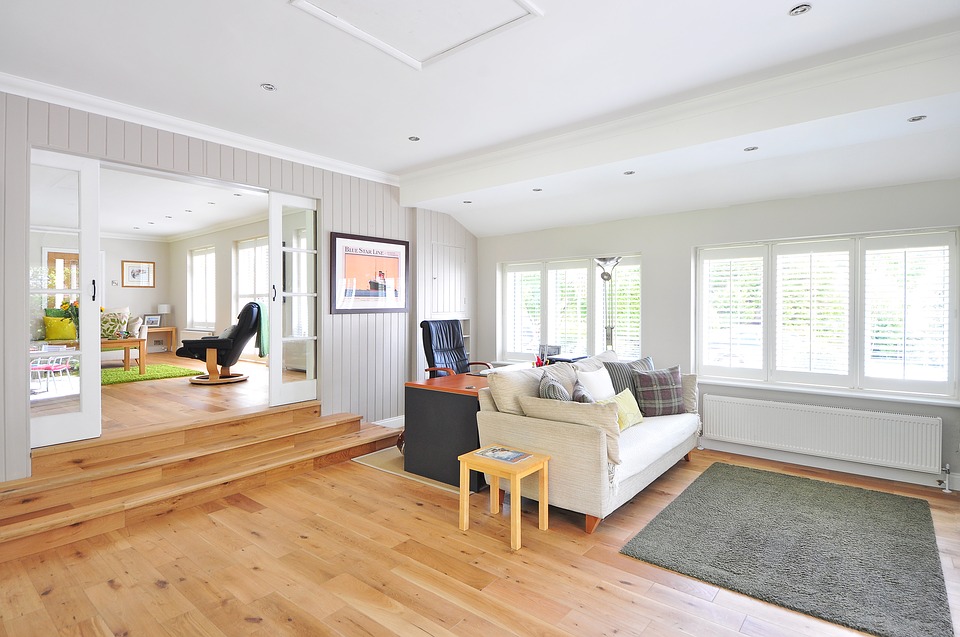
Flooring is an essential part of your interior design, but it doesn’t only affect the aesthetics of the space. It also plays a major role in the overall health of indoor space since a poor choice can result in release of toxins into the air, and thus threaten your family’s health.
The indoor air pollution that comes off as a result of various things, including the flooring materials, can be just as jeopardizing as the outdoor one. Besides, this important choice also has an impact on our planet.
So, if you want to be more responsible for your health and your planet, here are some flooring solutions you can choose, without making compromises when it comes to aesthetics.
Bamboo
Bamboo flooring has been gaining much popularity lately, not only because of it is harmless for your health and the planet, but also because of its beautiful look that comes as close to wood as it gets, even though it is actually grass. Unlike trees, bamboo grows really fast (three to five years) and doesn’t require the use of pesticides or any kind of chemicals. Also, although traditionally associated with the East, it can be grown anywhere. Style-wise, bamboo is available in many hues and varied grains. Furthermore, this material has the durability of steel and it is always easy to install.
Marmoleum
Linoleum is something that reminds us of our grandmothers’ houses – it looks like it has been there from the 1950’s and has that odd smell to it. However, the younger cousin of linoleum – marmoleum – is also eco-friendly, but it is free of odors and can look very stylish and modern. Marmoleum is made of natural materials that don’t contain toxins or any chemicals and it is installed with solvent-free adhesives or, if it is marmoleum click, it is installed with no adhesives at all. It is easy to clean and offers hundreds of different colors, patterns and borders.
Glass tiles
When you think about it, a large part of the house (bathroom and kitchen) is usually covered with tiles. But have you ever thought about how “green” your tiles are? With glass tiles, you don’t have to. They are made of recycled wine and beer bottles and other glass waste. Moreover, since it is not absorptive, glass won’t mold or mildew in damp areas, and it won’t stain. It is very easy to clean and maintain, so you won’t have to use any harsh chemicals to wash it. However, in some high-traffic areas glass tiles will require additional anti-slip protection, which can be easily solved with another “green product” – water based floor coating. A bonus feature of glass is that it will reflect light and make a room look bigger and brighter.
Concrete
Up until a couple of years ago, concrete floors indoors sounded like a rather silly idea. Still, as the time went by, people started to see the advantage of using this material in their homes. Concrete is appreciated for its durability, but also for its aesthetic. You can decide for the raw look of this material and decorate your home in industrial fashion, or choose some of the hundreds of colors and stains that can turn your home into everything you have ever imagined it to be. Also, the concrete can be poured in whole or it can create a tiled effect. There is even a possibility of inlaying other such as glass.
Cork
Wine bottle stoppers on the floor? Has the entire world gone entirely mad? Well, not entirely. Cork is an eco-friendly material which brings a lot of great perks into your home. It looks very organic. It doesn’t contain toxic or chemicals. It doesn’t require cutting down trees, since it is harvested from bark of the oak trees. It has anti-microbial properties. It is fire retardant and noise-absorbent. It is a natural insect repellent. Additionally, cork can be finished in various different paints and stains.
Reclaimed hardwood
Regardless of how many eco-friendly materials there are, we simply can’t escape the fact that the best looking flooring material is, in fact, hardwood. However, traditional hardwood flooring requires cutting down a bunch of trees. There is an alternative – reclaimed hardwood which is simply reusing trees that have already been chopped down ages ago. Besides making your home healthier, reclaimed hardwood will give it a unique vintage charm that can’t be compared with anything else.
We spend most of our time in our homes, and it is important to eliminate as many of health threats as possible. Start from the bottom and work your way up from the floors.
Written by Carolin Petterson
Author bio
 Carolin Petterson is a Business Lady and contributor for number of high-class websites. She loves to share her experiences and talk about practical solutions, but her specialties are sustainability, sustainable business and green living.
Carolin Petterson is a Business Lady and contributor for number of high-class websites. She loves to share her experiences and talk about practical solutions, but her specialties are sustainability, sustainable business and green living.
You may also like
Top 20 Things You Can Reuse and Recycle
The Ultimate Houseplant Cheat Sheet
How to Free Your Kitchen of Plastic
A Green Routine: Saving the Planet One Day at a Time
How to Greenovate Your Bathroom
Philips’ New Air Purifiers Help Families Clean Up The Air in Their Homes
